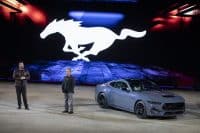
Is that all it takes to be a connected car? Not exactly. The National Highway Transportation and Safety Administration (NHTSA) announced in February that it will take steps to enable vehicle-to-vehicle (V2V) communications technology for light vehicles (cars, pickups, minivans and SUVs). While still in a very early stage, this technology would, among other things, enable vehicles to exchange basic safety data such as speed and position at a rate of 10 times per second.
Researchers Michael Sivak and Brandon Schoettle of the University of Michigan’s Transportation Research Institute recently published results of a survey of almost 1,600 drivers over the age of 18 from the United States, the United Kingdom and Australia in which the respondents were asked about connected vehicles. Nearly 80% had never heard of the idea before.
The survey included a description of connected-vehicle technology, and nearly 63% of respondents had a positive initial opinion of it. The safety aspects of the technology were the most favorably received, with 58% saying that fewer crashes and reduced severity of crashes were likely benefits of the technology. A little over 53% noted that emergency responses to crashes were also a likely benefit.
Respondents were also concerned about the consequences in the event the systems should fail, and more than a third were concerned with both system and vehicle security from hacking.
None of the benefit choices on the survey included any of the functions that Apple’s CarPlay touts. But when asked how important it was to be able to integrate the V2V technologies with personal communications devices, only about 21% said it was not at all important, while more than 56% said it was moderately or very important. That is where systems like CarPlay enter the picture.
The $64 question, though, is what would people pay for all this connectivity. The survey asked, “How interested would you be in having this technology on a vehicle you drive?” Some 62% were either very or moderately interested and only 14% were not at all interested. When asked how much they would be willing to pay for this technology, nearly half (44.4%) of drivers answered, “Zero.”
Many automakers are already incorporating some of this technology into their vehicles. Lane Departure Warning, Forward Collision Warning, and other advanced driver assistance systems (ADAS) are already available. Honda Motor Co. Ltd. (NYSE: HMC) offers an auto-pilot feature called Lane Keeping Assist on a couple of its Acura models. General Motors Co. (NYSE: GM) offers a variety of ADAS on some Cadillac models at package prices ranging from $3,000 to $6,000. Ford Motor Co. (NYSE: F) demonstrated its V2V technology at this year’s Consumer Electronics Show and how it could be used to supplement ADAS technologies to help avoid collisions. Tesla Motors Inc. (NASDAQ: TSLA) makes “repairs” to its cars by having owners download new software over the car’s integrated, always-on IP connection.
Google Inc. (NASDAQ: GOOG) has been working on its driverless cars the longest and very likely will never build one for consumers. But the company is so far ahead of every “real” automaker that the search engine giant could probably make a decent buck licensing the technologies it is developing.
Regarding the active-assist technology associated with driverless cars, the NHTSA noted in February:
The safety applications currently being developed provide warnings to drivers so that they can prevent imminent collisions, but do not automatically operate any vehicle systems, such as braking or steering. NHTSA is also considering future actions on active safety technologies that rely on on-board sensors. Those technologies are eventually expected to blend with the V2V technology.
Just last month the NHTSA ordered that by 2018 all new light vehicles would be required to have a rear-view visibility system. This is only the beginning for connected cars, and it is a lot more meaningful than just turning a car into a smartphone on wheels.
Thank you for reading! Have some feedback for us?
Contact the 24/7 Wall St. editorial team.




